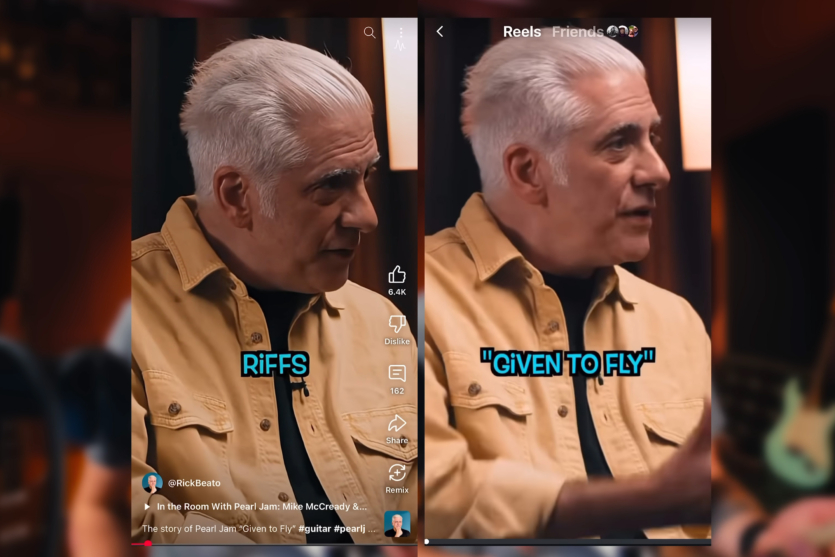
A popular music YouTuber noticed and provided evidence that another vlogger’s Shorts had been altered by the platform without authorization. YouTube actually acknowledged this in a very clumsy way.
Rhett Schull, the host of a popular music channel on YouTube, posted a video in which he provides visual evidence of changes to YouTube Shorts uploaded by Rick Bito, another influencer. Convinced that the video service would repeat the same tricks with his content, Schull analyzed a short video he had uploaded to both Instagram and YouTube and saw similar changes.
“It’s a little hard to tell at first. But if you start looking at things like the neck pickup on the Gretsch I’m playing, or the way the strings go over the pickup, or the Sting logo on the T-shirt I’m wearing, or the creases in the T-shirt, or the hair details, it just doesn’t look right. The more you look at it, the more you start to notice it,” Schull says.
The YouTuber is far from the only one who noticed unexplained and apparently unauthorized changes to the topic in Reddit has been talking about this for two months now. Users provide evidence in the form of comparative screenshots of the same video frame, links to similar cases on the Internet, etc. Here’s how the Ulincsys top starter described the problem:
“I’ve been experiencing a problem for a few days now: short videos appear to be ‘smeared’ or as if an oil effect has been applied to them. I couldn’t figure out what exactly was wrong, but only today I realized that some form of AI scaling was most likely being applied to the video […] The bottom screenshot shows very clearly scaling artifacts that you wouldn’t expect to see from a simple change in resolution, such as extra sharp shadows and overly sharp edges where the brightness changes quickly. The most telling sign for me is that his hair looks like plastic in the ‘scaled’ version, which I think is quite common with AI models.”
In his video, Rhett Schull asked his viewers for their opinions on the matter. So far, he has received a whopping 11,587 comments, with opinions on the situation and confirmations. The YouTuber draws his own conclusion.
“Whether you like my content, whether you agree with what I say, underneath it all is the fundamental basis that you believe that what I create, what I say, and what I do is really me. This is my real thought. This is my real work. And replacing or ‘enhancing’ my work without my consent or knowledge with some kind of artificial intelligence scaling system, I think, not only undermines the trust of the audience, but also my trust in the YouTube platform.”
YouTube representative in response to a question in X recognized changes noticed by users. But no, no, no, it’s not artificial intelligence, it’s machine learning.
“No GenAI, no upscaling. We’re running an experiment on select YouTube Shorts videos where we’re using traditional machine learning technology to remove blur, reduce noise, and improve video clarity during processing (similar to what a modern smartphone does when recording video). YouTube is constantly working to provide the best video quality and viewing experience possible, and will continue to take into account feedback from creators and viewers as we improve these features.”
Official account YouTube in X then confirmed a «experiment to improve video quality using traditional machine learning rather than GenAI».
Given the unclear definitions and overlap in the mass perception of such concepts as “artificial intelligence” and “machine learning,” the answer seems to be just a play on words. It is not clear how the result of applying one method is qualitatively different from the result of the other for the author and the viewer. And the problem is not that, but the lack of information about another implementation of AI in Shorts and the consent of the authors. As one commenter notes, “you spend a lot of money and time getting perfect shots and photos — only for YouTube to add an artificial intelligence filter to them.”
Source: Windows Central

Spelling error report
The following text will be sent to our editors: